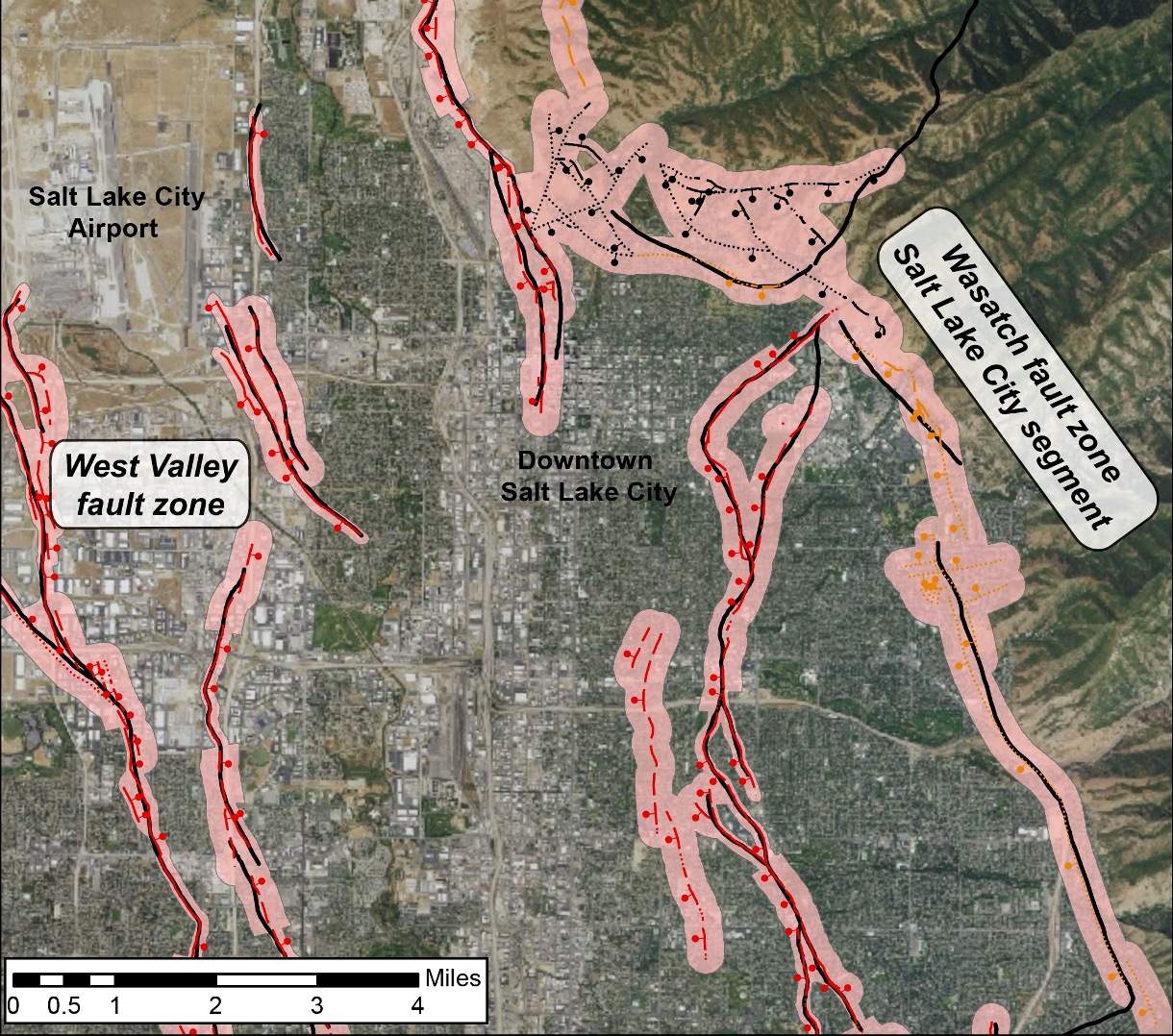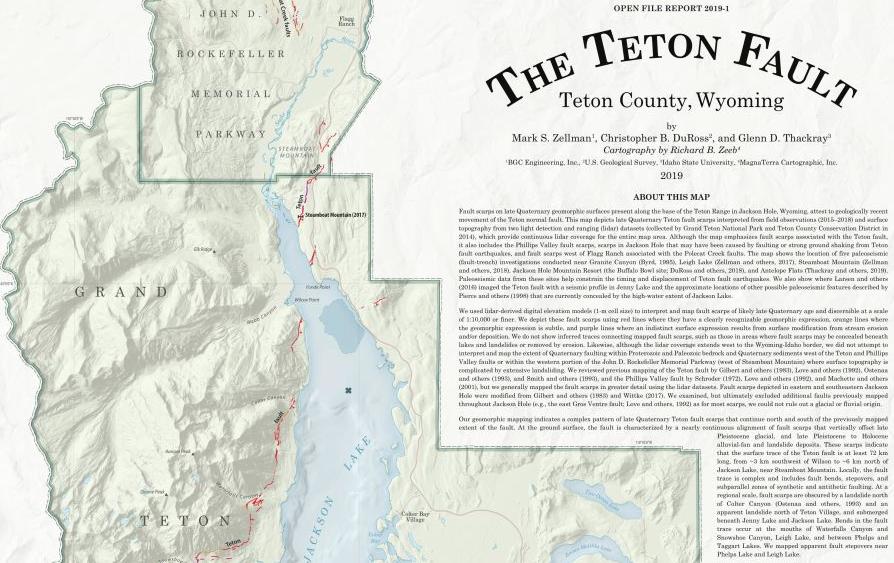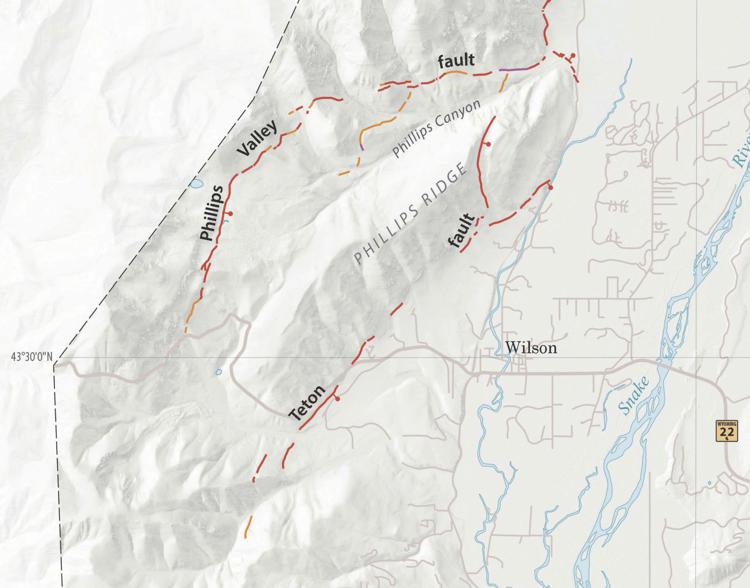Geologic History of the Fault Line: Fault Line In Wyoming

The Wyoming fault line is a geologic marvel that has shaped the landscape of the region over millions of years. The fault is a result of the interaction between two tectonic plates, the North American Plate and the Pacific Plate. The North American Plate is moving westward, while the Pacific Plate is moving eastward. This collision has caused the Earth’s crust to fold and break, creating the fault line.
The fault line is located in the western part of Wyoming, and it extends for over 300 miles. The fault is visible in the landscape as a series of cliffs and valleys. The cliffs are formed by the uplifted side of the fault, while the valleys are formed by the down-dropped side of the fault.
Types of Rocks Affected, Fault line in wyoming
The fault line has affected a variety of rock types, including sandstone, limestone, and granite. The sandstone is the most common rock type found along the fault line. The limestone is found in the central part of the fault line, and the granite is found in the eastern part of the fault line.
Estimated Age of the Fault
The Wyoming fault line is estimated to be about 50 million years old. The fault was formed during the Laramide Orogeny, which was a period of mountain building that occurred in the western United States.
Impact on the Landscape and Ecosystems

The Wyoming Fault Line has significantly shaped the surrounding landscape and ecosystems. The movement along the fault line has resulted in the formation of prominent geologic features, including mountains, valleys, and canyons. These features have influenced the distribution of vegetation, wildlife, and water resources in the region.
Effects on the Landscape
The movement along the fault line has caused the uplift of land on one side and the subsidence of land on the other. This has resulted in the formation of mountains and valleys. The uplift of land has created high peaks, such as the Grand Tetons, while the subsidence of land has formed valleys, such as the Jackson Hole Valley. These geologic features have influenced the local climate, creating distinct microclimates within the region.
Effects on Ecosystems
The fault line has also had a significant impact on local ecosystems. The changes in elevation and climate have affected the distribution of vegetation and wildlife. The higher elevations of the mountains support alpine vegetation, while the lower elevations of the valleys support grasslands and forests. The fault line has also influenced the distribution of wildlife, with different species adapted to the different habitats created by the geologic features.
In addition to the effects on vegetation and wildlife, the fault line has also impacted water resources in the region. The movement along the fault line has created fractures in the bedrock, which have allowed groundwater to seep to the surface. This has resulted in the formation of springs and seeps, which provide important water sources for wildlife and human populations.
Hazards and Mitigation

Fault line in wyoming – The presence of a fault line poses potential hazards that require careful attention and mitigation measures. The most significant risks associated with the fault line include earthquakes, landslides, and ground deformation.
Earthquakes occur when the rocks along the fault line suddenly slip, releasing stored energy. The magnitude and intensity of earthquakes can vary significantly, ranging from minor tremors to major events that can cause widespread damage and loss of life. Landslides can also occur along the fault line, particularly in areas with steep slopes. These landslides can be triggered by earthquakes, heavy rainfall, or other factors, and can pose a significant threat to human life and infrastructure.
Building Codes and Land Use Planning
To mitigate the risks associated with earthquakes and landslides, building codes and land use planning regulations have been implemented in areas near the fault line. Building codes specify the design and construction standards for structures to ensure they can withstand seismic forces and minimize damage during earthquakes. Land use planning regulations restrict certain types of development in areas that are at high risk for earthquakes or landslides.
Emergency Preparedness
In addition to building codes and land use planning, emergency preparedness measures are also essential for mitigating the impact of fault-related hazards. These measures include public education campaigns to raise awareness of the risks and promote preparedness, as well as the development of emergency response plans and training for first responders.
Beneath the surface of Wyoming’s vast landscape, fault lines silently mark the Earth’s restless energy. These geological boundaries hold secrets, not only of the planet’s tectonic past but also of potential seismic events. Just as the fault lines shape Wyoming’s physical terrain, the lynx vs wings prediction reveals the underlying currents of sporting rivalries.
These predictions, like seismic tremors, hint at the impending clash between two formidable teams, each poised to unleash their unique strengths and strategies. As the fault lines in Wyoming continue to shift and reshape the land, so too will the outcome of this epic sporting battle leave an indelible mark on the annals of competition.
The Wyoming Fault Line, a geological marvel, evokes a sense of awe as it carves through the landscape. Its existence, like the outcome of the upcoming Tigers vs Angels prediction , remains a mystery. Yet, as with the fault line, the geological forces that shape our lives can often be unpredictable, just as the outcome of this baseball match could surprise us.